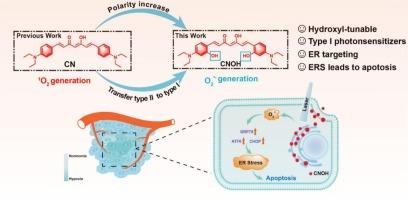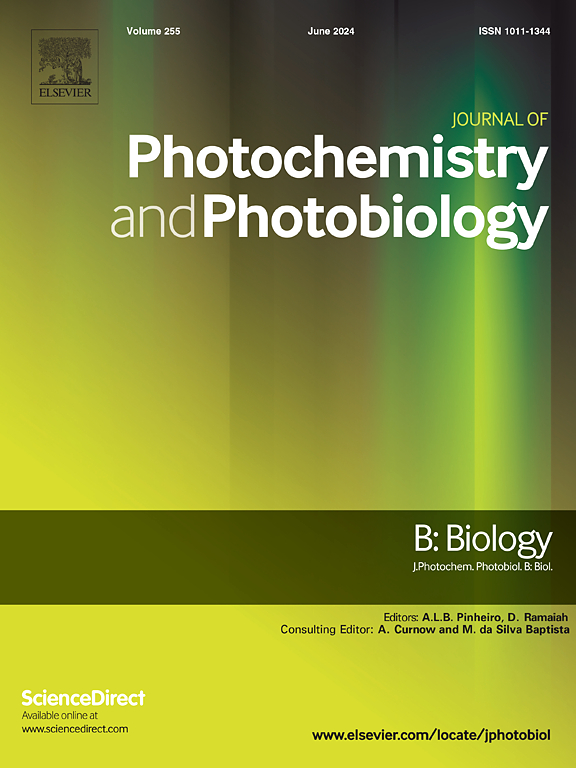基于姜黄素的羟基可调I型光敏剂对缺氧肿瘤细胞的光动力治疗
IF 3.7
2区 生物学
Q2 BIOCHEMISTRY & MOLECULAR BIOLOGY
Journal of photochemistry and photobiology. B, Biology
Pub Date : 2025-06-01
DOI:10.1016/j.jphotobiol.2025.113189
引用次数: 0
摘要
由于i型光敏剂对氧含量的依赖性较小,因此开发有效的方法来设计它们是非常重要的。在这项工作中,我们报告了一种通过在ii型光敏剂(CN)中引入两个羟基来制备1型光敏剂(CNOH)的简单策略。羟基不仅是供电子基团,还能形成氢键,影响光敏剂的能级和极性。结果表明,CNOH的ΔES1-T1小,还原电位大,可能有利于电子转移,通过I型过程生成超氧阴离子。此外,与双细胞器靶向光敏剂CN相比,由于CNOH的亲脂性较弱,因此仅表现出内质网靶向性。在缺氧条件下,CNOH对肿瘤细胞表现出比CN更强的光毒性,更适合用于缺氧肿瘤的PDT治疗。这为I型光敏剂的设计提供了新的方向。本文章由计算机程序翻译,如有差异,请以英文原文为准。

Hydroxyl-tunable type I photosensitizer based on curcumin for photodynamic therapy against hypoxic tumor cells
The development of effective approaches to design type-I photosensitizers is of great importance due to their less oxygen content dependency. In this work, we report a simple strategy for the preparation of type-I photosensitizer (CNOH) by introducing two hydroxyl groups into the type-II photosensitizer (CN). Hydroxyl is not only an electron-donating group but can also form hydrogen bonds, affecting the energy levels and polarity of the photosensitizer. The results indicated that the small ΔES1-T1 and substantial reduction potential of CNOH might facilitate electron transfer to generate superoxide anions through type I process. Additionally, compared with the dual organelle-targeted photosensitizer CN, CNOH only exhibited endoplasmic reticulum targeting due to the weaker lipophilicity of CNOH. Under hypoxic conditions, CNOH showed stronger phototoxicity to tumor cells than CN, making it more suitable for PDT in hypoxic tumors. This provides a new direction for the design of type I photosensitizers.
求助全文
通过发布文献求助,成功后即可免费获取论文全文。
去求助
来源期刊
CiteScore
12.10
自引率
1.90%
发文量
161
审稿时长
37 days
期刊介绍:
The Journal of Photochemistry and Photobiology B: Biology provides a forum for the publication of papers relating to the various aspects of photobiology, as well as a means for communication in this multidisciplinary field.
The scope includes:
- Bioluminescence
- Chronobiology
- DNA repair
- Environmental photobiology
- Nanotechnology in photobiology
- Photocarcinogenesis
- Photochemistry of biomolecules
- Photodynamic therapy
- Photomedicine
- Photomorphogenesis
- Photomovement
- Photoreception
- Photosensitization
- Photosynthesis
- Phototechnology
- Spectroscopy of biological systems
- UV and visible radiation effects and vision.

 求助内容:
求助内容: 应助结果提醒方式:
应助结果提醒方式:


